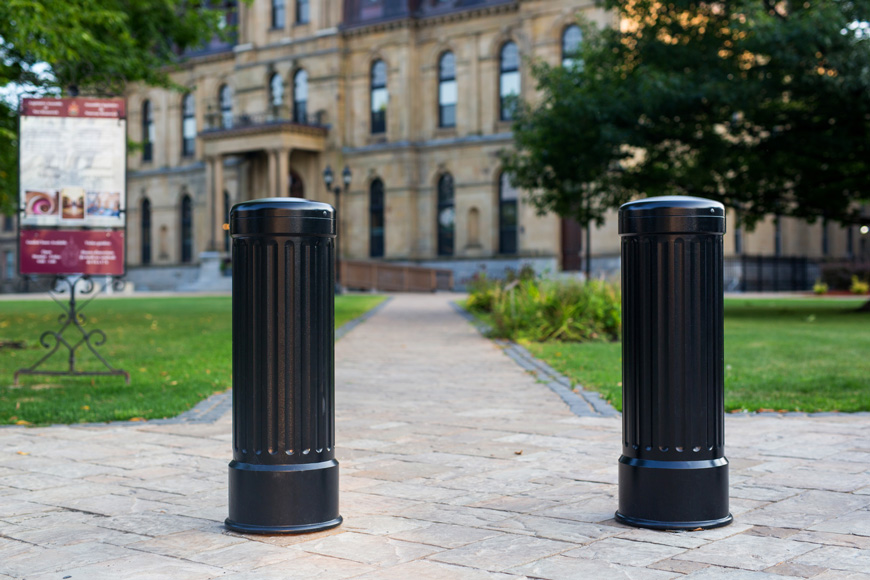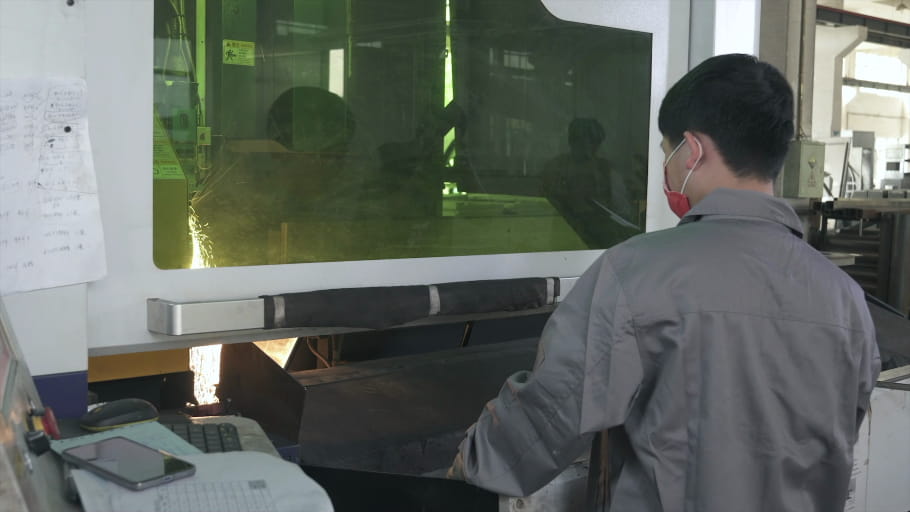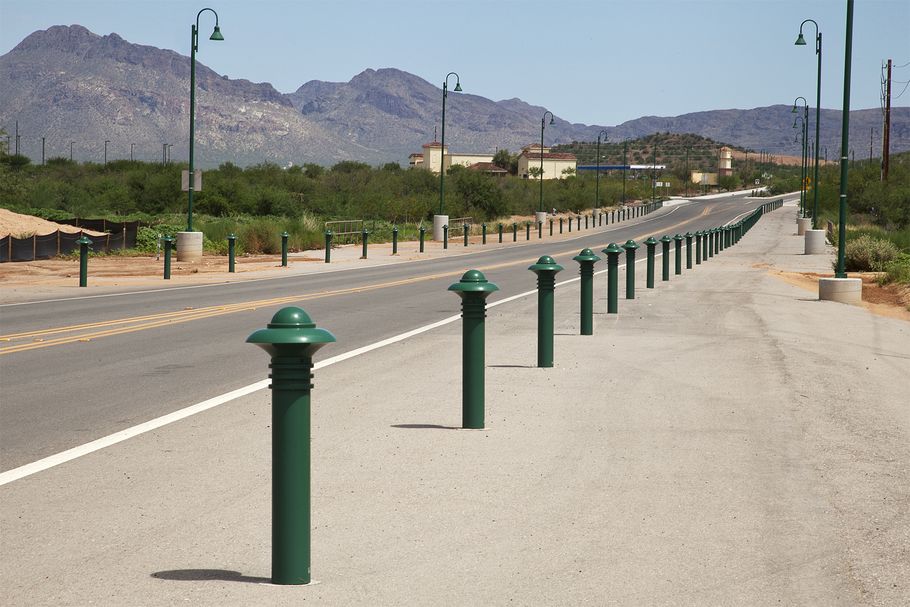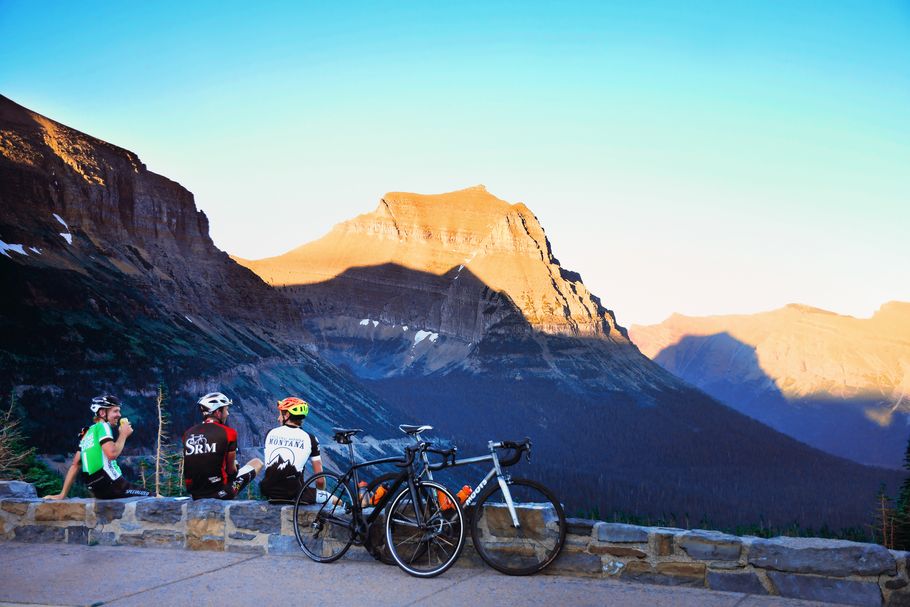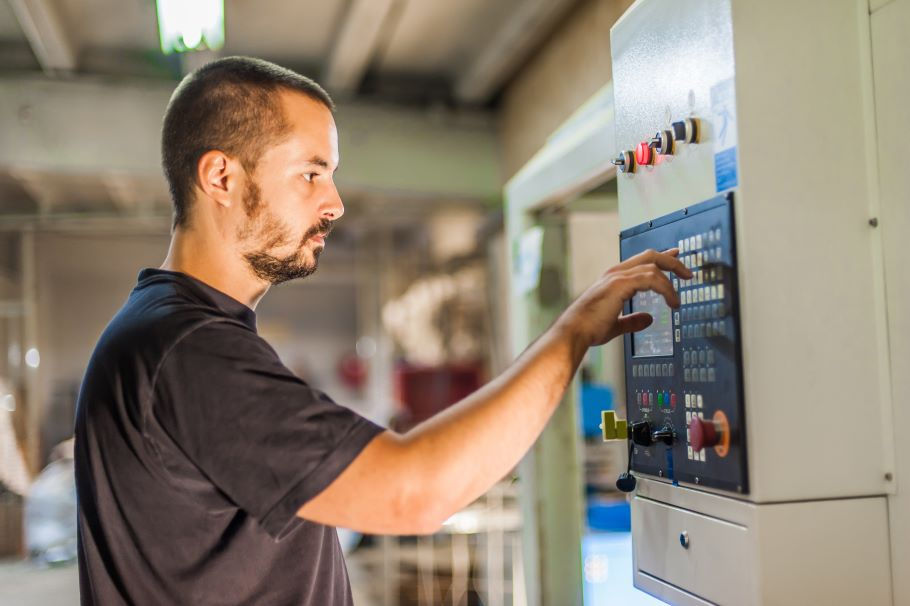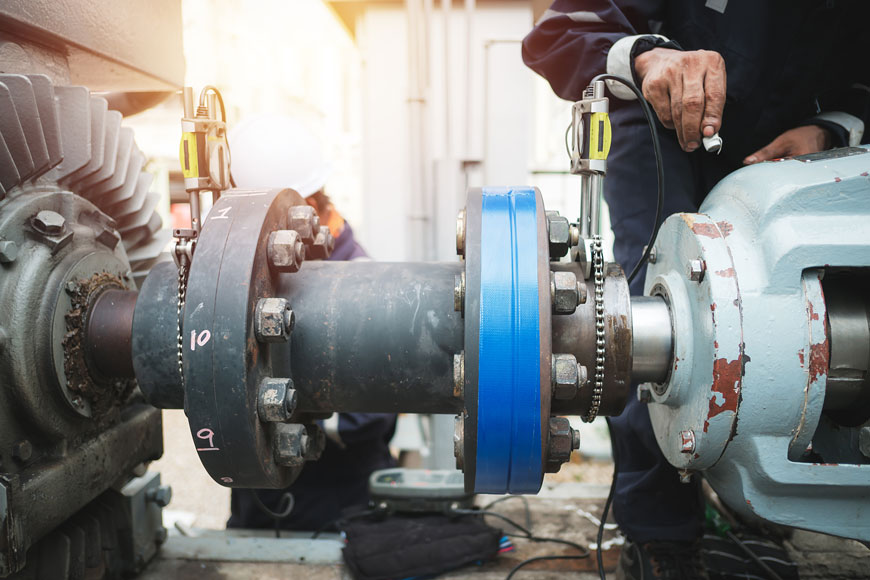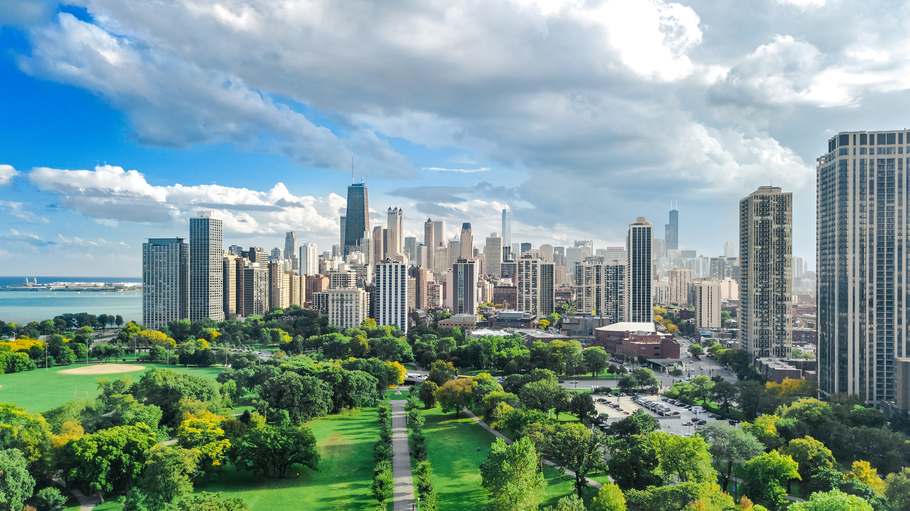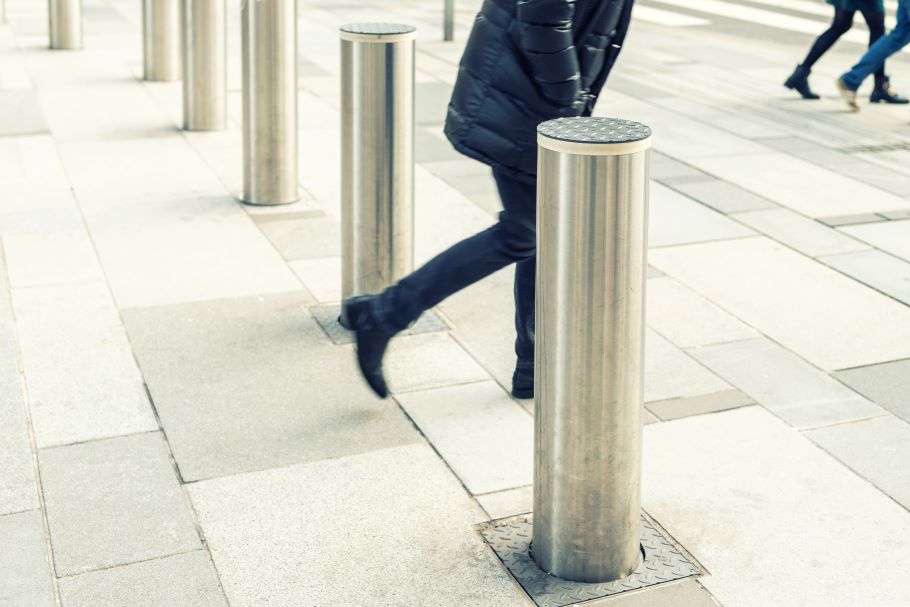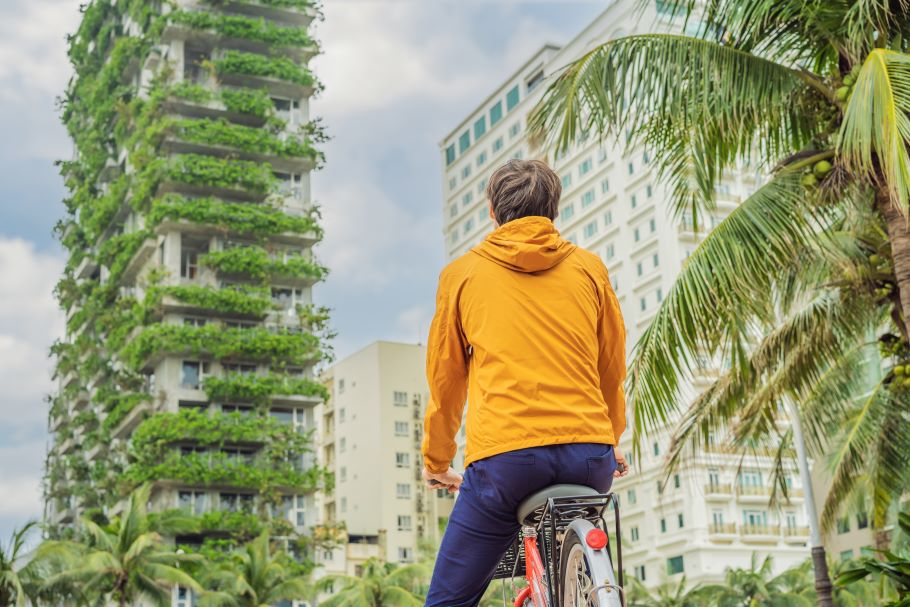Creating bike- and pedestrian-friendly campuses and schools
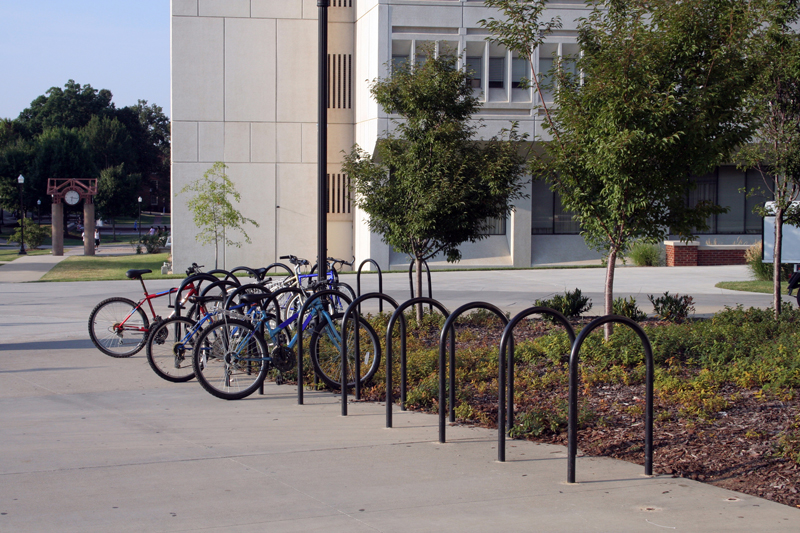
School upgrades give designers a chance to think about how built environment affects behavior. People choose activities when they have resources supporting these choices: so it is with active transportation. Lack of safe cycling or walking infrastructure is a discouragement on busy roads. Seeing this, many municipalities are working to create supportive infrastructure for all users, including cyclists and pedestrians.
Schools are an excellent place to start, creating habits that can last a lifetime. However, getting kids walking and biking to school requires cultural change. Most kids arrive to school in cars: driving is standard. Creating new habits means making active transportation feel normal. Elementary kids don’t want to stand out as doing something strange!
Prominent bike racks are an easy but effective first step because bikes and bike racks remain as an example. Bollards create areas of safety for walkers and guide traffic away. Both school bollards and school bike racks are a reminder there are options available.
The problem of traffic around schools
Why should active transportation be a goal?
Cultural change toward vehicle-drop off has been a North American trend…but it’s not universal, and it’s not historically the way things were done. In 1969, 48% of elementary school students in the United States got to school on their own by walking or cycling. In 2009, that number had dropped to only 13%.
City streets are more clogged because of this change. Caregivers taking kids to class make up 10–14% of the morning traffic rush. Traffic snarls are common around schools, often in residential zones not built to handle such traffic volume. Cars try to jockey past one another, turn around, and find places to stop that are not always curbside. Is it any wonder that a University of Toronto study found that behaviors such as these—behaviors associated with too many vehicles—increase the likelihood of student injury? A study of police reports and hospital admissions over a 12-year period showed certain behaviors more dangerous to kids. Double parking, across-street parking, passing school buses, and backing cars up caused increased hospitalization rates. These behaviors show up more often in streets that are over-capacity. Frustrated drivers make poor decisions.
The decrease in active commuting also contributes to the loss of daily exercise in children’s lives. Type II diabetes, once mostly found in adult populations, is a growing concern for minors. The increase in this type of diabetes is linked to lack of exercise.
In a survey of parents discussing barriers to active transportation, 61.5% of chauffeuring parents suggested distance was a problem. Commutes have gotten longer for some: in 1969, 41% of students lived within a mile of the building whereas now, 31% live within a mile. For many, it’s no longer easy to walk to school.
30% of the respondents also called out traffic-related danger. Safety is on everyone’s minds, and parents know traffic can be a danger to pedestrians and riders.
Unfortunately, more chauffeurs create more traffic.
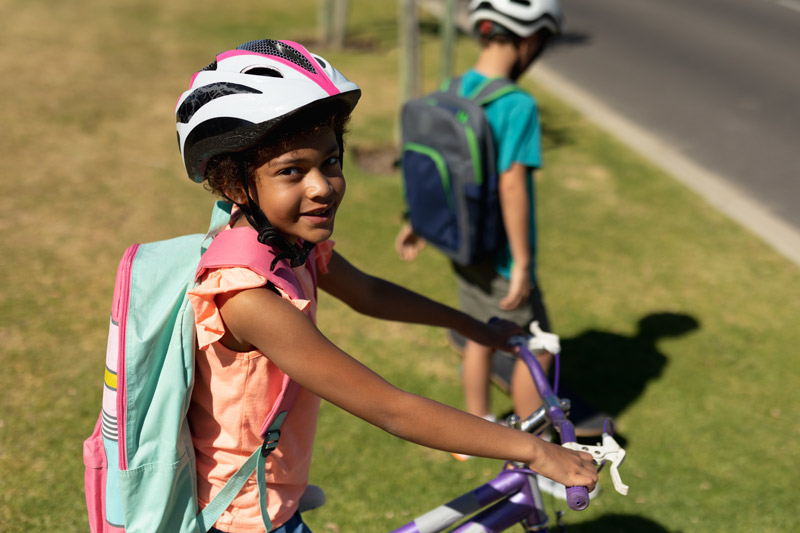
Safe Routes to School programs
One of the ways to combat both traffic and distance is encouraging children to cycle to school. Safe cycling gives a commuter more range in the same amount of time, for the same amount of effort. Children commuting by foot or bike take vehicles out of the traffic snarl around schools.
Safe bike infrastructure to and from school, and adequate facilities at school, are necessary to make this an option for families.
Safe Routes to School programs have launched in both the United States and Canada to help support active transport to school. These programs address the challenges families are facing.
Studies show that changing the environment calms traffic more effectively than posting signs or having strict laws. A well-designed street discourages inappropriate driving behavior. In over-capacity streets, however, accidents are still more likely to happen. Drivers are more likely to perform atypical maneuvers.
Getting kids moving is also a goal: studies show active commutes help maintain children’s health.
Environmental design aimed at riders and walkers is effective at bringing more people to the streets. Separated bike lanes and cycle tracks encourage people of all ages and abilities. New riders often wobble a little. A separated bike lane makes drivers, parents, and students more comfortable with the idea of cycling to school. Bollards, too, can help protect pedestrian spaces. Where there are tight corners, small sidewalks, lack of curbs, or multi-use areas, bollards can create safety and walking corridors.
What schools can do
Schools can encourage active transportation through:
- Policy: 6% of parents said their schools have a policy against elementary school children coming to school alone.
- Education: Schools can support young walkers and riders by making street safety an active part of the school culture. Workshops, active travel as part of gymnastics curriculum, and classroom teaching all re-enforce behavior. Practicing cyclist hand signals and street sign decoding, or the street crossing safety of “stop, listen, and look both ways,” helps children gain skill and confidence.
- Walking and riding school buses: For younger kids, getting a group together under the supervision of older children or parents normalizes active transportation while practicing new skills.
- Modeling: Local teachers, staff, and aides who use active transportation are models of the behavior for students.
- Site planning: Schools can set up zones for drop-off and pick-up that are displaced from pedestrian and bike routes. Around school buildings, ample bike parking for staff and students and pedestrian-only zones create an expectation of use. Staff facilities that allow for change of clothing and a shower increase adult rates of cycling. Bottle-filling water fountains are popular solutions.
Why bike parking matters
At school, bike parking and knowledge of how to use it are essential, because theft deters riders. Seven percent of bike theft victims never replace their stolen bikes. Theft is disheartening, and because bikes are small-value targets compared to cars, they are hard to trace and replace (although new strategies in policing and recovery are being tried all the time).
Having solid, unassailable bike racks, and teaching students how to lock a bike successfully, keep would-be robbers from discouraging young new riders.
What do you need to know when buying a school bike rack?
School racks have changed from those most common in the 50s. Grid racks, sometimes known as schoolhouse racks, were the most common type of bike rack for many years. Riders rolled their back tire into a slot and locked from there.
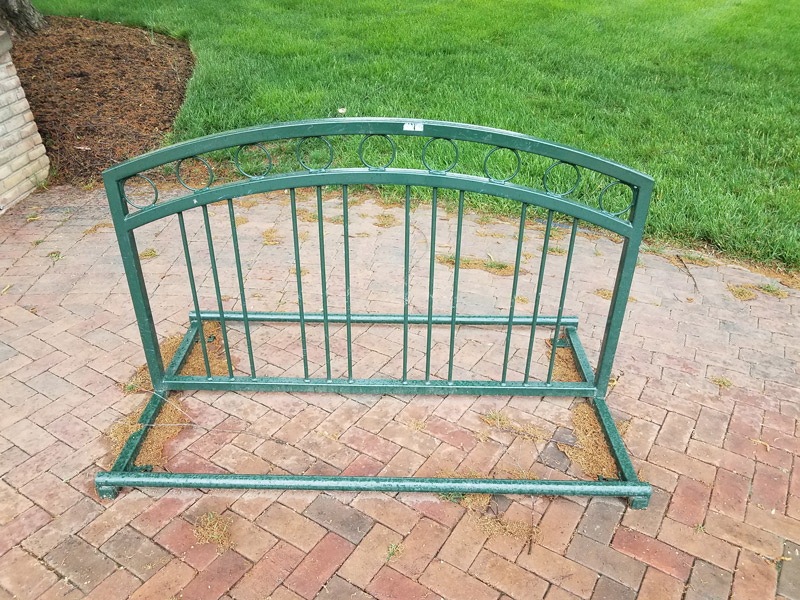
Grid racks have a few problems.
The first is lack of support. Often riders wheel their front tire into the grid racks, and the bike has very little support. These racks are sometimes called “tire busters” by those who have had their front wheels warped.
Thieves will target these racks as well. If the cyclist has only locked the front wheel, it can often be removed and the rest of the bike easily taken. Thin grid bars make the rack itself a point of vulnerability. If there’s an expensive target bicycle on the rack, a thief may work less opportunistically. They may find a time the rack is likely unobserved, and return with bolt cutters or a saw to break through the grid bars themselves.
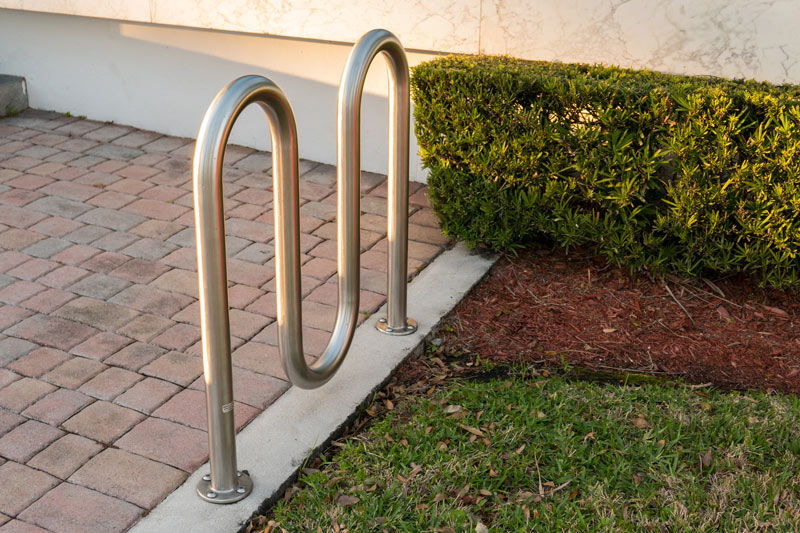
Wave racks are a better choice, with their thick bar construction that will foil a thief targeting the rack. They also encourage the cyclist to lock to the frame, rather than just to the wheel.
The most secure way to use a wave rack is to lift the bike’s front wheel over a dip, or to back into a crest, so that the bike frame sits between two waves. This placement helps keep the bike upright, as the frame will rest on one side or the other. However, the wave rack offers only one point of contact with the frame in regular use. These racks are fairly common at schools because they provide secure parking options.
Bike advocates prefer racks that provide 2 points of contact for a bike. There are many available options. Bike bollards, inverted U-racks, ring racks, and other geometrically shaped racks are popular. Racks that offer two points of contact are often bought in single units, each providing parking for two bicycles. Schools can order bike racks with respect to expected volume and increase as the population of riders increases. A series of racks can also offer an attractive visual pattern, and are therefore more often used as architectural accents—but at a flexible price.
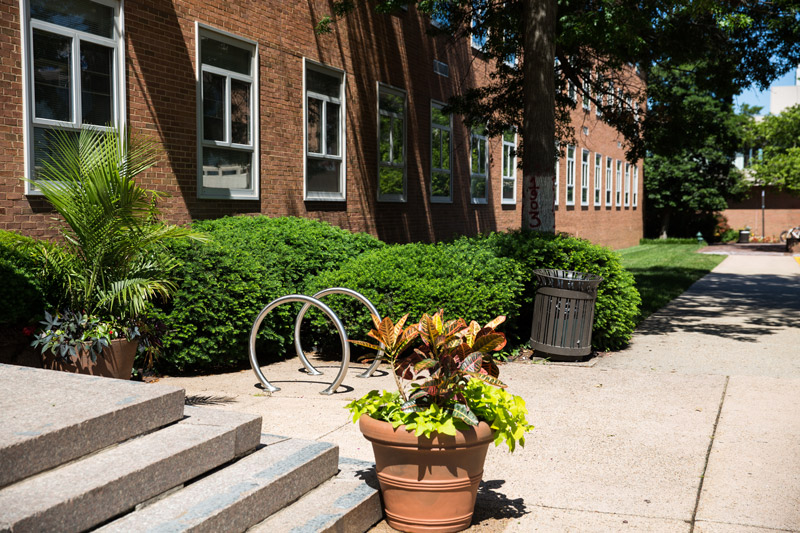
Finishes for bike racks
Bike racks are often made of steel. Steel needs a finish to be protected from the elements. Powder-coat is the traditional finish option, preventing pinhole discontinuities that are often found in paint.
Stainless steel has gained in popularity. The fine silver finish is modern and clean. When placed outside, quality 316 stainless steel offers more corrosion resistance to salt and other outdoor hazards than does 304 or 409 stainless.
An innovation in finishes can be found in IronArmor coatings. These do not rely on the traditional resins of paint and powder, and so on a molecular level have a tighter seal. As such, they are more UV and salt resistant, are harder to scratch or ding, and they make graffiti easier to remove. Should scratches happen, this finish is easy to repair. It’s an excellent choice for schools where hard use and graffiti artists might be present. IronArmor is available in a FrameSafe option—the coat is applied more thickly, to provide a softer surface to rest bike frames against.
Bicycle rack dimensions
When choosing a bike rack, what dimensions are optimal? Height, width, and overall shape are important for both bike parking and other users of the sidewalks.
- Height: Optimal height is between 30–36″ tall. This range of heights allows the frame to rest completely against the rack, with a U-lock threaded through for maximum security.
- Width: For single unit racks like U-racks and circle racks, the two points of contact should provide stability. 18–35″ widths provide maximum stability for the largest range of bikes, although smaller widths can work for children’s bikes.
- Overall shape: where racks are near pedestrian spaces, they need to be ADA compliant so as not to cause a tripping hazard. Any rack over 27″ (most racks of optimal height) should have no part of the rack protruding more than 12″ from the post. A person using a cane can detect leading edges below 27″ with a cane sweep, but above that height overhang becomes dangerous.
Racks for schoolgrounds should also not have gaps between 3.5″ and 9″ where a child might put their head through and become trapped.
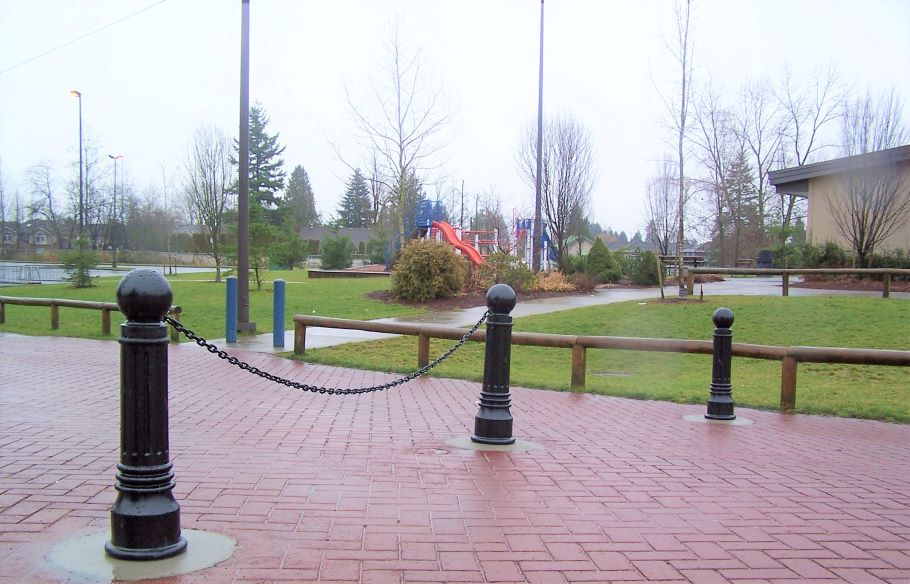
Why school bollards matter
Bollards are short traffic posts that help guide traffic and protect pedestrian spaces. They’re very versatile around schools, being able to both guide drivers and students.
In parking lots, bollards can create corridors of safe passage between rows of cars. Around a school’s campus, they can mark pedestrian areas: with decals, they can also be used as wayfinding devices, pointing visitors to the office, playground, or parking lot. Bollards can also be linked with chains, to make a short “fence” that encourages students to travel in certain areas and cross at designated crosswalks. However, unlike a real fence, the hook-and-eye system of the bollard chain allows for easy removable.
How to choose a school bollard
School bollards should be chosen based on the particular perimeter needs of the school.
- Crash-rated or security bollards: If one side of the school is near fast moving traffic or a deep corner, crash-rated or security bollards can be chosen to protect students, staff, and buildings from out-of-control vehicles. Crash-rated bollards can also be used at schools where there is more likely to be an attack, as they are rated to prevent cars from crossing more than 3ft over their perimeter.
- Permanent: Permanent bollards might be installed in lieu of a curb or fence, or along the line of a traffic circle, as a pedestrian permeable but car impermeable barrier.
- Removable: For areas of the school that are mixed or variable use, removable bollards can cordon off space in some seasons but allow vehicle access in others.
- Flexible: Thick polyurethane flexible bollards make an excellent addition to a separated bike line. Their more substantial profile means that drivers avoid them, but they still bend if emergency vehicles need to get through.
First steps towards a culture of active commuting
With tight school budgets and timelines, allocating resources is a challenge. Adding single-unit school bike racks can begin the process in an inexpensive way that allows for expansion in the future. Bolt-down installation is a simple process year-round. Embedded installations are easy to put in with any new concrete slab work done over the summer months.
During the school year, administrations can follow up by encouraging local staff to model cycling behavior. Organizing walking or cycling “school buses” help kids become expert with rules of the road and under supervision. Outreach with the Parent Teacher Associations can help address parent concerns. These are low cost ways to begin the change to culture of commuting around a school. Where it’s possible, bringing more kids to school in active ways is good for their health and safety. Over time, these new routines can ease traffic congestion and parental stress, while empowering kids to be comfortable in their neighborhoods.

